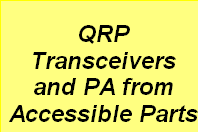


Antentop is FREE e-magazine devoted to Antennas and Amateur Radio an
Special page devoted to
TV Antennas for Distance Receiving

Custom Search
|
ANTENTOP-
01- 2015, # 019 |
TV Antennas
for Distance Receiving |
|
|

|
|||
|
|
|||
|
|
By: Leonid Pozdnyakov Credit Line: Radio # 10, 1953, pp.: 53-
54. |
||
|
|
|
||
|
At the original articles
published at Radio # 10, 1953, there were described several antennas
for distance receiving TV broadcasting stations. Below it is described
one of those antennas- it is a Rhombic Antenna. Rhombic Antenna
is easy to make and at the same time has perfect parameters. Rhombic
Antennas are easy to build and at the same time has high gain
and good diagram directivity. However the antennas have some lack.
Such antennas required lots space for installations and need at
least for masts instead one that used to support traditional directional
antennas. Figure
1 shows design of the
Rhombic Antenna. Rhombic Antenna is a rhomb that hang up horizontally
at the ground. Feeder is connected on to one sharp angle of the
rhomb. Terminated resistor is connected on to far sharp angle
of the rhomb. The resistor value should be equal to the impedance
of the rhomb at the working frequencies of the antenna. As usual
the value is near 700- Ohm. Working frequencies of the antenna
may have pass band in hundreds megahertz. So using such matched
resistor allows create a super broadband antenna that has impedance
near 700- Ohm at the frequencies window in several hundred megahertz.
High
gain and high directivity of the rhomb antenna could be explained
by combining gain and diagram directivity of the parts of the
antenna. The antenna consists of four wires with traveling wave.
Figure 2 shows the combination. Each wire has own gain and diagram
directivity. |
Front
Cover Radio #
10, 1953 The gain and diagram directivity depends on ratio the length of the wire
to the working wavelength. So, the summary gain and diagram directivity
depends on the ratio the length of the wire to the working wavelength
and to the sharp angle of the rhomb. |
||
|
|
|
||
 Title of the Article |
|||
|
Page- 75 |
|||
 |
 |
|
 |
Just for Fun:

Powered byIP2Location.com
Thanks for your time!
Last Updated:
January 5, 2020 21:41





